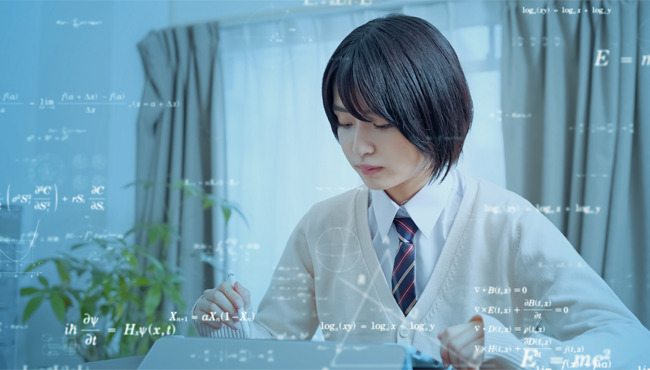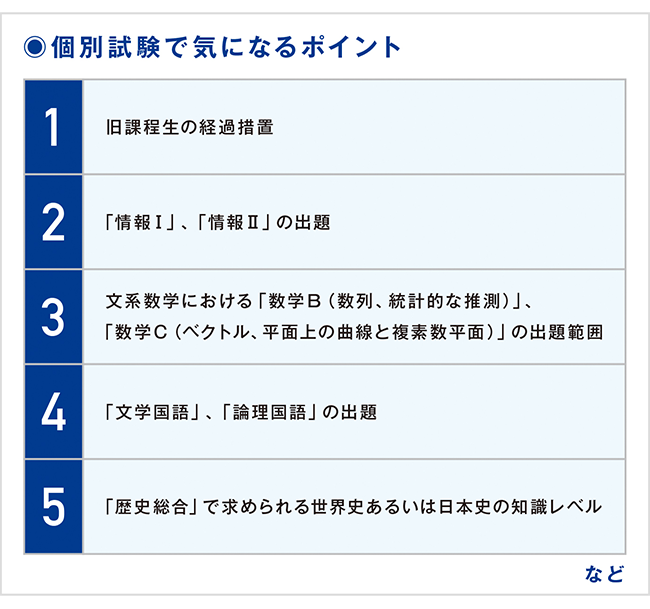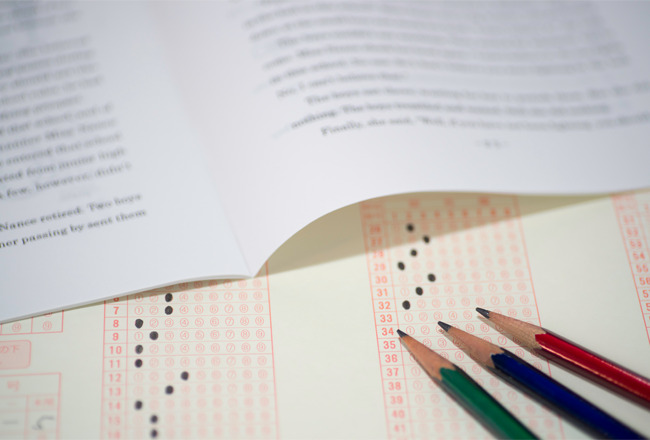The 1 (Reiwa 2025) entrance examination, in which the current first-year high school students take the university entrance examination.The entrance examination subjects will be announced within this year.The Japan Association of National Universities has already announced in January that it will impose "Information I" in principle.The University of Tokyo also announced the subjects and subjects used for the Common Test for University Admissions (hereinafter referred to as the Common Test) in March, but the points, selection patterns, individual test subjects, etc. have not yet been announced.However, there are some movements such as the disclosure of detailed information by leading universities such as Osaka University.Let's look at the points at this stage.

Waseda University Faculty of Human Sciences can select common test "information"
The subjects / subjects and exam hours of the common test, and the transitional measures for current curriculum students (old course students in the 2025 entrance examination) have already been announced.In addition, the Japan Association of National Universities has announced that in principle, students will take 6 subjects in 8 subjects including "information".Attention is being paid to what kind of entrance examination subjects each university will take in response to these, but in the common test, the points of "information" of each national and public university are worrisome.Whether it will be treated as the same score as science, geography, and public citizens, there is also a method of lowering the score even though it is a mandatory exam, or even if it is a mandatory exam, the score is not used for pass / fail judgment in consideration of the high school site. Get it.
It is noteworthy how this "information" is imposed by the common test usage method of private universities.In the Japanese-English style of the Faculty of Human Sciences, Waseda University, which has already been announced, "information" is an elective subject along with mathematics, science, geography and civilians.In the number English type, it is an elective course along with Japanese language, science, geography and civilians.In both cases, individual exams are imposed in addition to the subjects of the common test, and the individual exams have a larger score, so it can be said that the impact is limited, but it is a general common test usage method of private universities. In that case, things are different.
Since many private universities use an entrance examination method that makes a pass / fail judgment based only on the scores of the common test, it is difficult to make "Information I", which is the standard 2 credits in the course of study, an elective subject equivalent to Japanese language and mathematics. It seems.Many private universities are expected to have a selection pattern of geography / civilian (in some cases, national language) or information in the case of science and engineering faculties, and science or information in the case of faculties of human and social sciences. The balance in terms of the number of units is not good.
In addition, the common test is "Physics, Chemistry, Biology, and Geography" in science at national and public universities, but the University of Tokyo and Osaka University, which have already been announced, are elective courses (currently the University of Tokyo). Can be selected at difficult universities such as literature).Also, it is worth noting whether the new subjects of geography and civilian "geography synthesis, history synthesis, public" are elective courses.In addition, Tokyo University and Osaka University have "Public, Ethics" and "Public, Political / Economic" as elective courses, but "Geography Comprehensive, History Comprehensive, Public" are not elective courses.
Osaka University does not have any special transitional measures even if it considers those who have taken the old curriculum.
Osaka University also publishes detailed information on individual exams.The subjects of the national language are "modern national language" and "language culture". "Literary national language" and "logical national language" are not included in the questions.It is the same subject as the common test.
In science mathematics, number I, number II, number III, number A ("property of figure", "number and probability of cases"), number B ("sequence"), number C ("vector", "plane" The above curve and complex plane ") and does not include Math B ("statistical guessing ").Literary mathematics is almost the same as the current one in number I, number II, number A ("property of figure", "number and probability of case"), number B ("sequence"), and number C ("vector").It is a little reassuring setting for students who will take the exam as an old course student.In addition, the geography is the same subject setting as the common test, "Geography synthesis, geography exploration", "history synthesis, Japanese history exploration", "history synthesis, world history exploration".In addition, regarding the transitional measures for those who have taken the old curriculum, it is said that "each subject / subject will consider those who have taken the old curriculum, but no special transitional measures will be taken", so how much "consideration" I am wondering if it will be done.I would like you to clearly indicate this area, such as "questions from a common range."

In the future, the universities that announce the entrance examination subjects will refer to the subject settings of the leading universities that have already been announced, but it is thought that the subjects such as mathematics questions will be set according to the current entrance examination subjects as much as possible.In that respect, the course setting at Osaka University may be said to be the standard for entrance examinations.In addition, it is necessary for the examinees to clearly show the contents like <Table> in the individual examinations including private universities.I would like to request the consideration of each university.

Common test becomes more difficult due to increased test time
In addition to these, there are major changes to the common test.It is a change of the test time.From the beginning of the common test, the test time for Mathematics ① (mainly Mathematics I and Mathematics A) has been 60 to 70 minutes.However, it is said that there were still a large number of examinees who did not have enough time to solve the problems in this year's Mathematics I and Mathematics A.
In addition to this, from the 2025 entrance exam, the exam time for Mathematics ② (Mathematics II, Mathematics B, Mathematics C) will increase from 60 minutes to 70 minutes.Generally speaking, longer exam times mean more questions.Naturally, it is expected to become difficult.
In addition, it has been announced that the test time will increase from 80 minutes to 90 minutes in Japanese.It was talked about during the pretest (trial survey) of the common test, but it is said that there may be one more problem such as practical documents such as contracts that were planned to be given as descriptive questions. I am.Since it has been decided that no descriptive questions will be given, the answer format will be a mark formula, but this is also likely to be a difficult question.
If it becomes difficult in mathematics and Japanese with a large score, the average score will drop.However, on the other hand, it has been repeated in the past that the average score of the common test increases at the turning point of the entrance examination system.It is not possible to predict that much from now on, but first of all, it is necessary to carefully look at the entrance examination subjects announced by each university during this year.
<Reference site>
・ About the examination for the examination after the XNUMXth year of the National Center for University Entrance Examinations
https://www.dnc.ac.jp/kyotsu/shiken_jouhou/r7ikou.html
・ National university enrollment selection system after 2024-Basic policy of the Japan Association of National Universities-
https://www.janu.jp/news/9466/
・ Changes in Waseda University entrance examination
https://www.waseda.jp/inst/admission/undergraduate/change/
・ Notice of the subjects and subjects used at the University of Tokyo for the Common Test for University Admissions for the 30th year of Reiwa, which corresponds to the 7 Notification High School Study Guidance Guidelines
https://www.u-tokyo.ac.jp/ja/admissions/undergraduate/20220326.html
・ About the subjects and subjects used in the selection of university entrance exams for the 30th year of Reiwa, which correspond to the Osaka University 7 Notification High School Study Guidance Guidelines (Notice) [2022.5.20]
https://www.osaka-u.ac.jp/ja/admissions/faculty/general/2025
